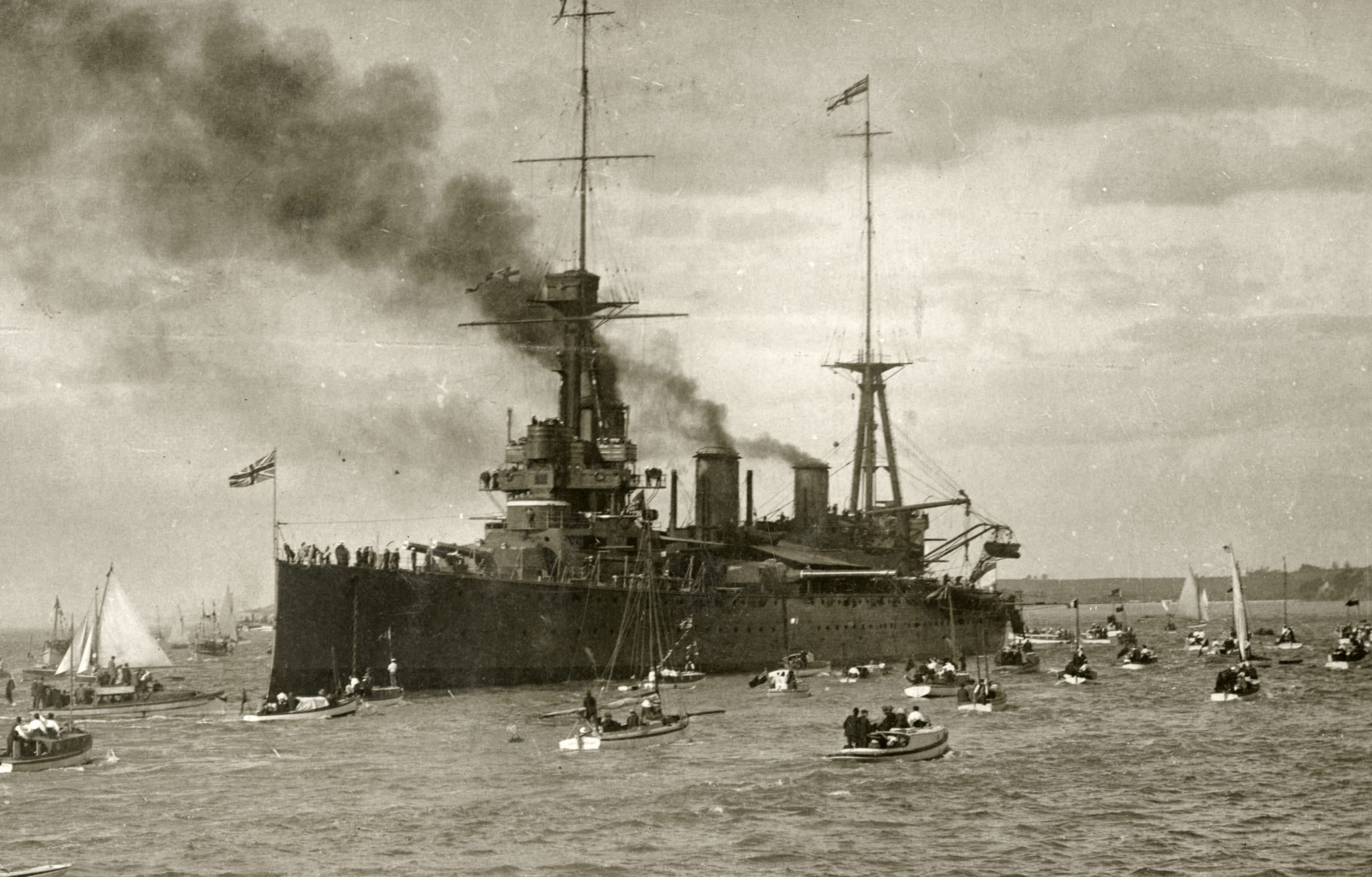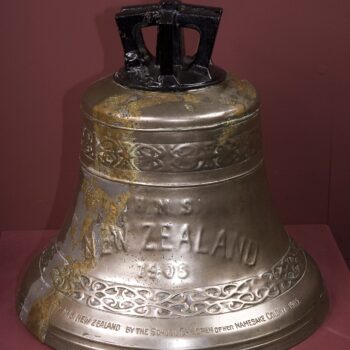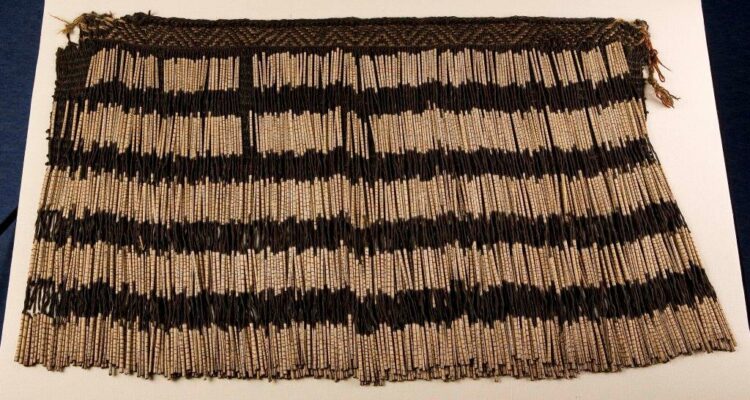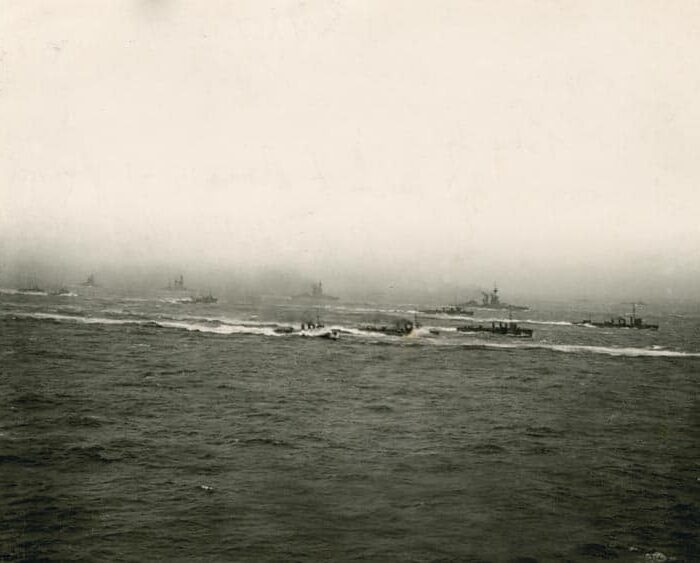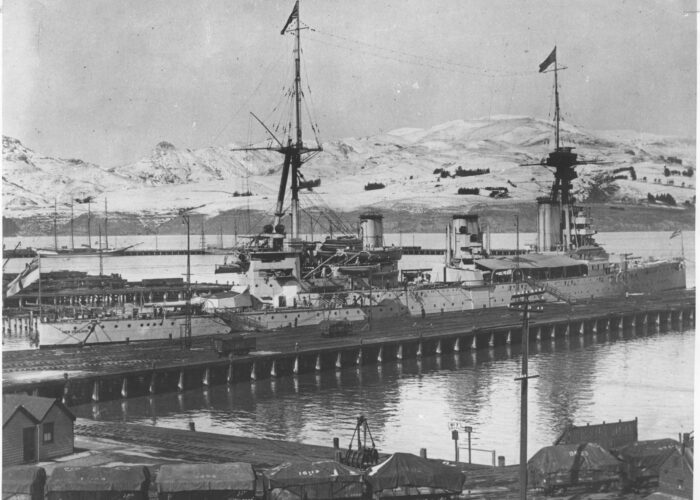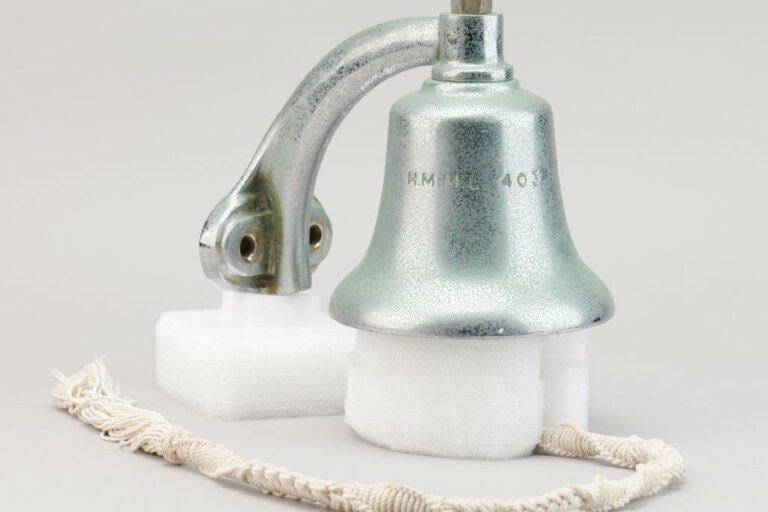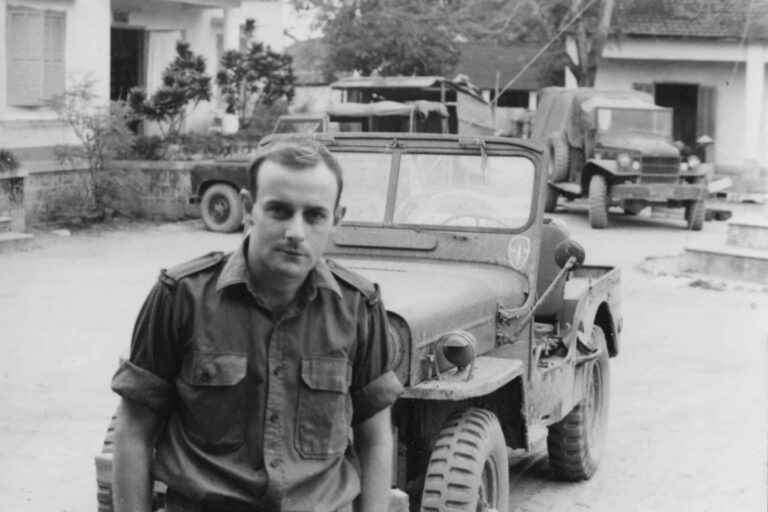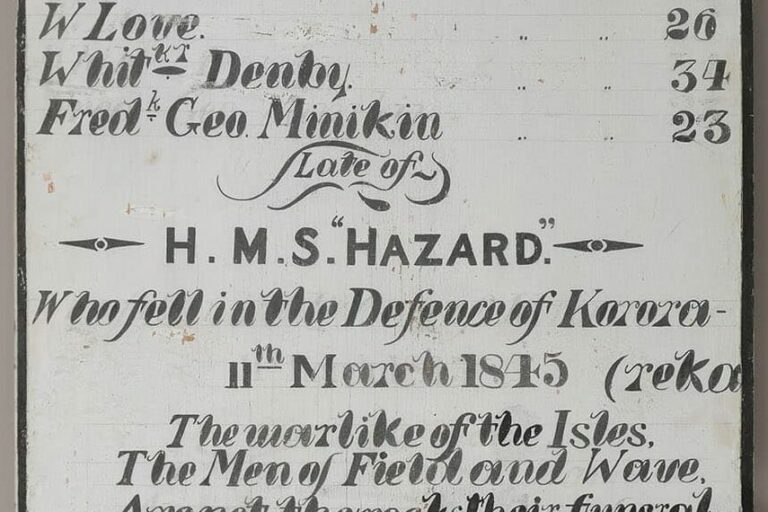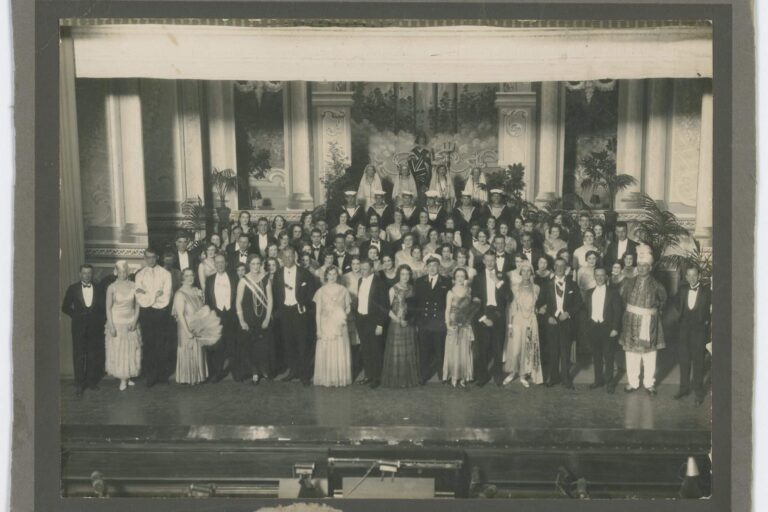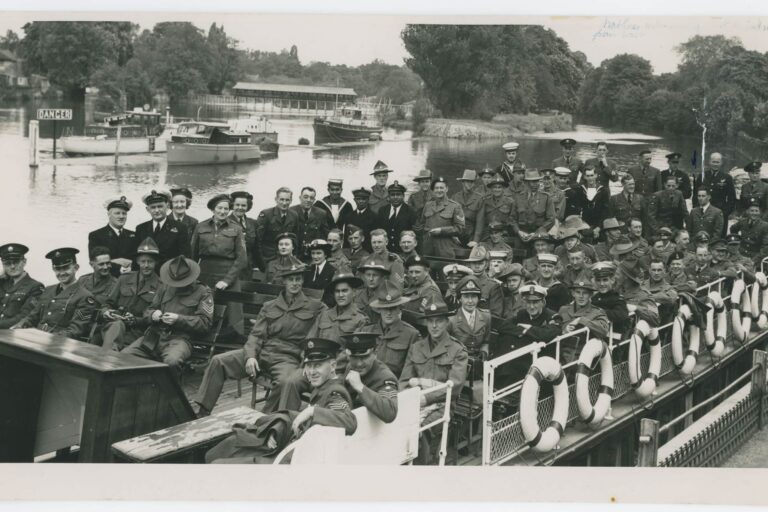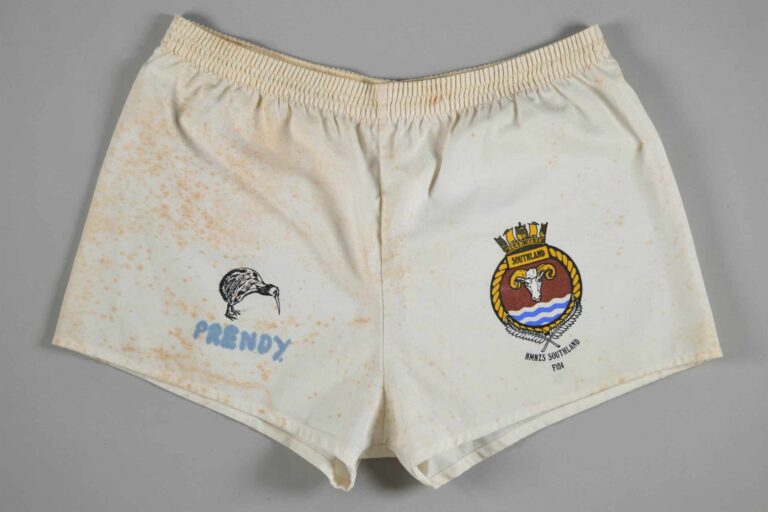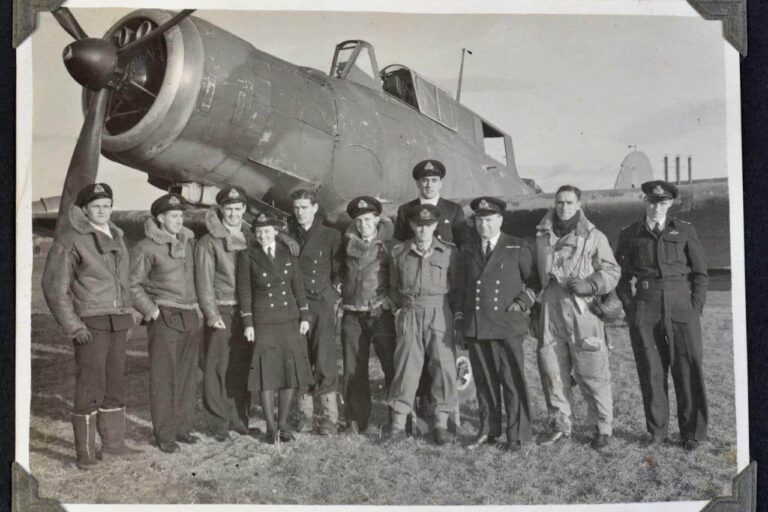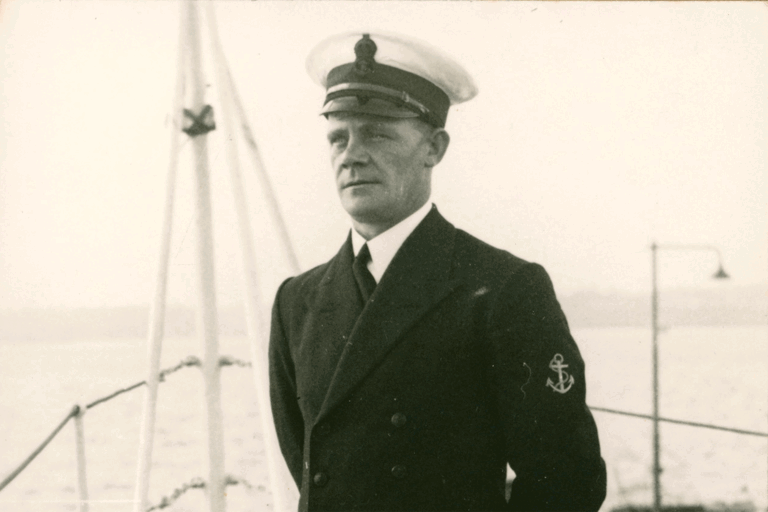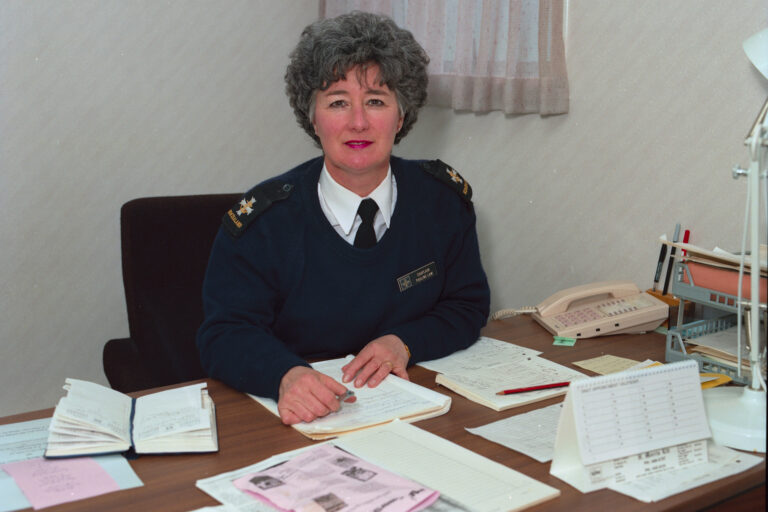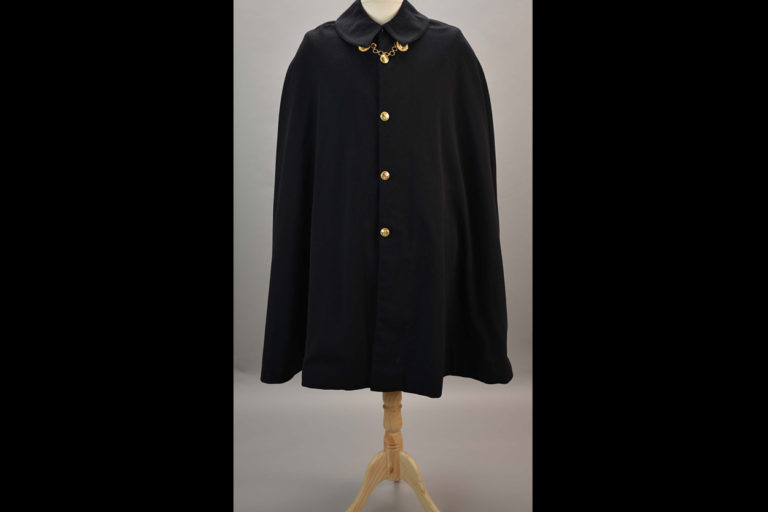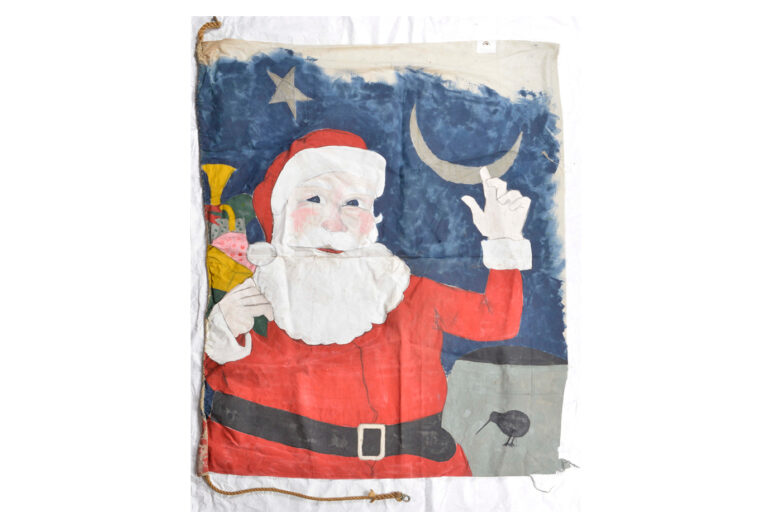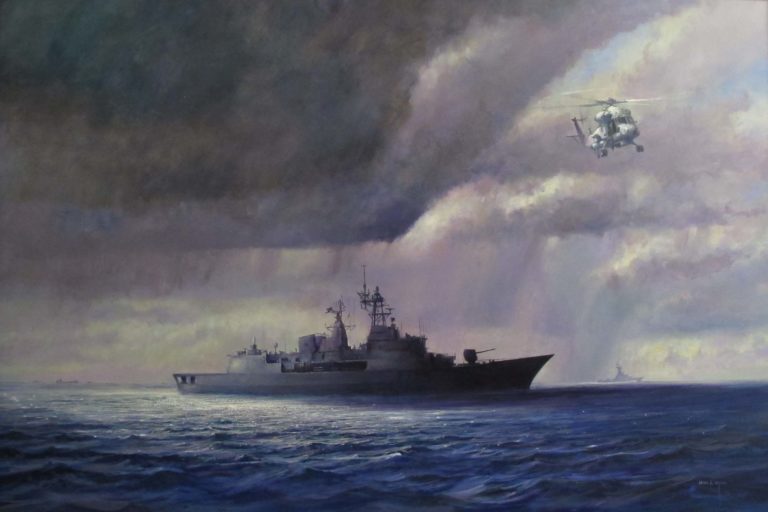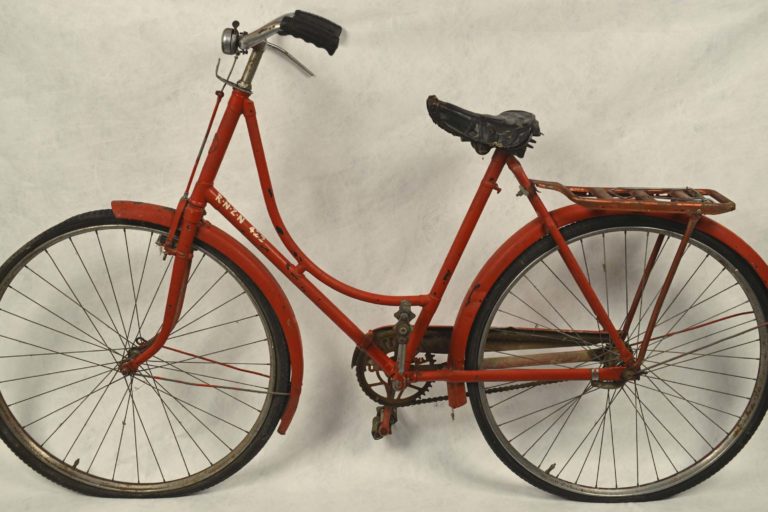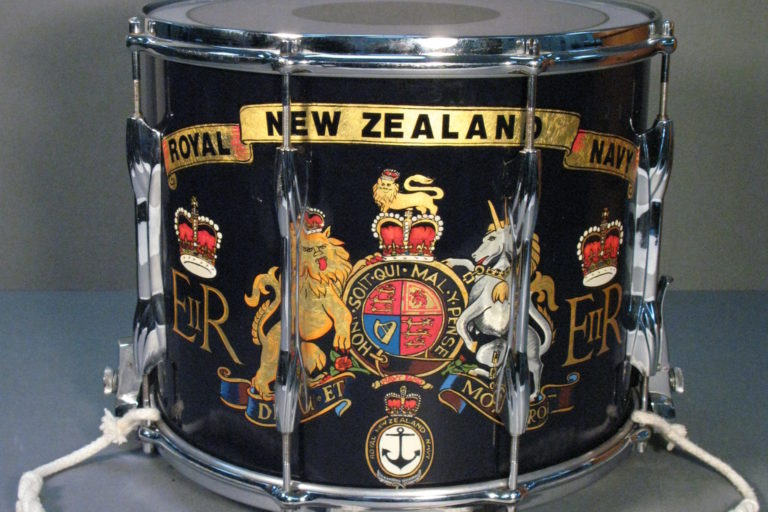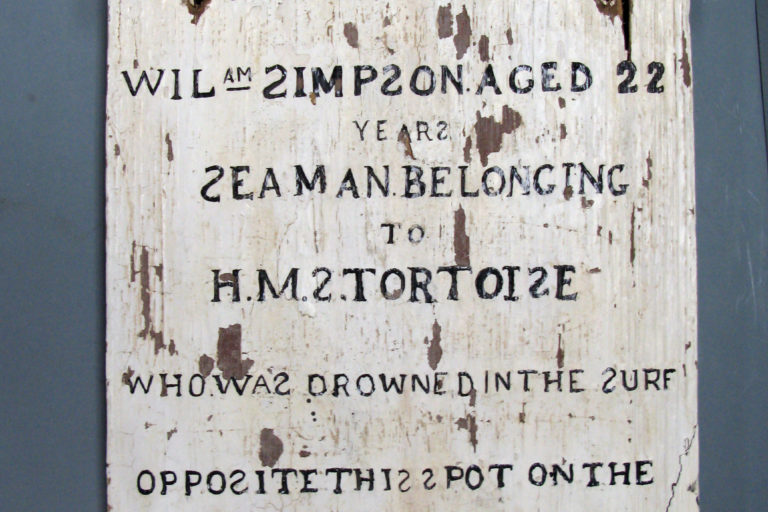HMS New Zealand
Ship Details:
Tonnage: 18,800 tons
Dimensions: 179.8 x 169.2 x 24.4 x 9.1 m
Machinery: 4-shaft turbine, coal (later oil) , ihp 44,000 (32,800 kW) = 26 kts
Armament: 8-12 in. (305 mm), 16-4 in. (102 mm) some were later removed and 2-3 in. AA guns (76 mm) added; 2-21 in. TT (533 MM, Submerged), 1 Aircraft in 1917-19 initially a Sopwith Pup later replaced with a Sopwith Camel.
Complement: 800
Class: Indefatigable, battle-cruiser
Builder: Fairfield Shipbuilding & Engineering CO. Ltd, Govan, Glasgow.
Launched: 1 July 1911
Commissioned: 23 November 1912
Background
In 1909 New Zealand committed to the purchase of a battleship for the Royal Navy in the midst of a naval arms race with the Imperial German Navy.
Due to the needs of the Royal Navy the generosity of the nation was put towards the construction of an Indefatigable-class battlecruiser which was named HMS New Zealand.
Displacing 22430 tons, she was fitted with 12-inch guns and had a ship’s company of 800 officers and ratings.
New Zealand was completed in 1912 and commissioned into the Royal Navy on 23 November 1912.
There was already a battleship in the fleet named New Zealand, so to make way for the new ship she was renamed Zealandia. The new HMS New Zealand was then given the bell from the former HMS New Zealand.
The new ship was sent on a world cruise and to specifically visit the proud Dominion.
She arrived in April 1913 to a rapturous welcome and drew huge crowds wherever she visited.
While in New Zealand she was showered with gifts, the most important being a piu-piu and tiki given to the commanding officer.
The commanding officer was advised to wear the piu-piu and the tiki while the ship was in battle to ensure good luck.
It had been intended that New Zealand would be a nucleus of an Asia-Pacific Fleet, but once she returned to Britain she joined one of the Royal Navy’s battlecruiser squadrons of the Grand Fleet, facing off against the German fleet across the North Sea which was where she was, when the war broke out.
The first battle she took part in was the Battle of Heligoland Bight in August 1914 and engaged the German battlecruisers.
This was followed by the Battle of the Dogger Bank in January 1915 where again her guns were in action against the German ships.
She came through both battles unscathed which the ship’s company put down to the lucky piu-piu and tiki.
There followed a long period of waiting for the German fleet to make an appearance.
At the end of May 1916 the German fleet was reported at sea and New Zealand and Grand Fleet came out to meet them.
This was the Battle of Jutland, the largest and last clash of surface forces in naval history.
New Zealand took part in the battlecruiser action in the afternoon of 31 May 1916.
Three battlecruisers were lost to German guns but New Zealand only suffered damage to her X-turret.
New Zealand spent the rest of the war with the Grand Fleet waiting for another encounter with the Germans that never came.
New Zealand was present in November 1918 when the German fleet sailed into internment following the Armistice.
In February 1919, she was sent again on a world cruise carrying Admiral Jellicoe to visit the Dominions to discuss postwar naval matters.
She arrived in August 1919, again to a warm welcome and departed New Zealand in October.
New Zealand joined the Reserve Fleet on return to Britain in 1920.
The Washington Naval Treaty meant that she could no longer be retained and she was sold for breaking up in 1922.


